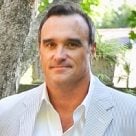Brian Graff, CEO of the American Society of Pension Professionals and Actuaries, is more than a little skeptical of Sen. Marco Rubio's proposed solutions for America's ailing retirement landscape.
"It's surprising, in a word, from a Republican," Graff said in a posting on ASPPA's website. "It sounds like he's trying to 'Obamacare' retirement. It's really not what we need to help retirement in this country. Unlike health care, there is not an access problem."
In a recent address to the National Press Club, Sen. Rubio, R-Fla., suggested that Americans without access to workplace retirement plans should be able to enroll in the federal Thrift Savings Plan, the retirement plan that is available to members of Congress.
Recommended For You
The Thrift Savings Plan is a low-fee 401(k) plan, and the largest in the U.S. by assets.
"His proposed solution is not addressing the cause of the issue," said Graff, calling Rubio's proposal a "gimmick" similar to President Obama's MyRA program.
Introduced in this year's State of the Union address, MyRA would allow workers to open individual retirement accounts that invest in the G-Fund, a government bond that is also offered in the Thrift Savings Plan. Initial investment could be as low as $25, and as little as $5 at a time could be contributed through automatic payroll deductions. Contributions would be capped at $5,500 annually, similar to a Roth IRA.
The MyRA program, which is scheduled to start at the end of the year, has drawn wide-ranging criticism. Some have questioned the productivity of G-Fund, which returned 1.89 percent in 2013 — barely enough to outpace the increase in the Consumer Price Index.
Others wonder why lower-income Americans should be expected to finance government spending by given the sole option to invest in a government bond.
Graff believes the issue of inadequate retirement savings can be better addressed by expanding access to workplace retirement plans, but that existing regulations deter many employers from offering them.
Data shows that workplace programs motivate higher savings rates. Over 70 percent of people making between $30,000 and $50,000 contribute to retirement plans offered in the workplace. Only 5 percent of people save when they don't have access to a workplace plan, according to Graff.
"The problem is not a supply problem. It's a demand problem," said Graff. "I can't get through any basketball game without seeing commercials for cars, beers and IRAs. It's a pretty competitive market out there."
© Touchpoint Markets, All Rights Reserved. Request academic re-use from www.copyright.com. All other uses, submit a request to [email protected]. For more inforrmation visit Asset & Logo Licensing.







